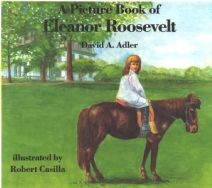As COVID-19 deaths spiked in 2020, Suzanne Firstenberg’s public art installation "In America: How could this happen…"
History Explorer Results (123)
Related Books (28)

Grade Range:
K-12
Resource Type(s):
Artifacts, Primary Sources
Date Posted:
11/14/2008
This circular slide rule describes the effects of a nuclear explosion on people. After World War II, scientists at the Los Alamos Scientific Laboratory prepared a report on forms of damage associated with the explosion of atomic bombs. These included physical damage, fire and heat, and nuclear ra

Grade Range:
K-12
Resource Type(s):
Artifacts, Primary Sources
Date Posted:
11/13/2008
This cloth banner celebrates the electoral victory of Thomas Jefferson over John Adams in the presidential election of 1800. The banner is believed to be one of the earliest surviving textiles carrying partisan imagery, created at the dawn of the first American party system in which power passed

Grade Range:
6-12
Resource Type(s):
Reference Materials
Date Posted:
11/3/2008
This exhibit showcases two major themes: the history and use of papier-mâché anatomical models and their construction, conservation and preservation, using the Museum's collection of papier-mâché anatomical models. The exhibition also includes an interactive game named "Body Parts"

Grade Range:
K-12
Resource Type(s):
Artifacts, Primary Sources
Date Posted:
10/27/2008
AbioCor Total Artificial Heart is the first electro-hydraulic heart implanted in a human. Approved by the United States Food and Drug Administration for clinical trails, the AbioCor was implanted in Robert Tools by cardiac surgeons Laman Gray and Robert Dowling on July 2, 2001, at Jewish Hospital

Grade Range:
K-12
Resource Type(s):
Artifacts, Primary Sources
Date Posted:
10/27/2008
Andreas Vesalius (1514–1564), an early European physician and professor of medicine, wrote an important treatise on the human body, published in 1543. He provided detailed illustrations that demonstrated muscle structure and other features of human anatomy, based on his work dissecting cadavers

Grade Range:
6-12
Resource Type(s):
Artifacts, Primary Sources
Date Posted:
10/27/2008
This is an anatomical model of a woman, complete with removable parts. The kit includes a clear plastic body or shell, a "complete" skeleton, "all vital organs," and a round plastic display stand. The kit was designed as an educational tool to teach basic anatomy. The intructions explain how to a

Grade Range:
K-12
Resource Type(s):
Artifacts, Primary Sources
Date Posted:
10/27/2008
Yorick is a plastic male skeleton imbedded with electronic and mechanical devices used to replace worn body parts. Yorick was created by Ed Mueller, an engineer in the Division of Mechanical and Material Sciences at the United States Food and Drug Administration (FDA), in Washington, D.C.

Grade Range:
K-12
Resource Type(s):
Artifacts, Primary Sources
Date Posted:
10/9/2008
The astrolabe is an astronomical calculating device used from ancient times into the eighteenth century. Measuring the height of a star using the back of the instrument, and knowing the latitude, one could find the time of night and the position of other stars. The openwork piece on the front, ca

Grade Range:
4-12
Resource Type(s):
Reference Materials
Date Posted:
10/9/2008
This is an experimental program through which you can take a virtual tour of selected objects from the Museum’s collections. The website links to 450 objects from the found on a customizable map that can be used to group objects in different ways. By voting for your favorite obje

Grade Range:
K-12
Resource Type(s):
Reviewed Websites
Date Posted:
10/9/2008
This is a link to the official website of George Washington’s famous Virginia home. The site presents information about life at Mount Vernon, as well as detailed information about Washington himself. For teachers and students wishing to learn about George Washington, this website is a good plac



















